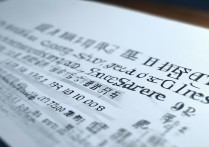高考标准分数是怎么计算出来的?
高考标准分数,referred to as "standard score" or "Z-score" in statistical terms, is a method used to convert raw scores (the actual number of correct answers a student gets) into a standardized scale that allows for meaningful comparison across different exams or different years. This process is particularly important in high-stakes examinations like the National College Entrance Examination (Gaokao) in China, where the difficulty of the exam paper can vary slightly from year to year, and the pool of test-takers may also differ in overall academic performance. The primary purpose of standardization is to ensure fairness and equity in the evaluation of students' abilities.
The most common type of standard score used in Gaokao is the "Z-score," which is calculated by subtracting the mean (average) score of all test-takers from an individual's raw score and then dividing the result by the standard deviation of the scores. The formula is: Z = (X - μ) / σ, where X is the raw score, μ is the mean score, and σ is the standard deviation. A Z-score of 0 indicates that the student's performance is exactly average, a positive Z-score indicates performance above average, and a negative Z-score indicates performance below average. For example, if the mean score on a particular Gaokao subject is 75 with a standard deviation of 10, a student who scores 85 would have a Z-score of (85 - 75) / 10 = 1, meaning they performed one standard deviation above the mean.
However, Z-scores can be negative and have decimals, which might not be intuitive for students and parents to interpret. Therefore, many educational systems, including Gaokao, use a transformed standard score, often called the "T-score" or a scaled score, to make the results more user-friendly. This transformation typically involves multiplying the Z-score by a constant (such as 10 or 100) and then adding another constant (such as 50 or 500) to shift the distribution to a more positive range. For instance, a common transformation is T = 10Z + 50. In this case, a Z-score of 0 becomes a T-score of 50, a Z-score of 1 becomes 60, and a Z-score of -1 becomes 40. This scaled score maintains the relative position of students in the distribution while presenting the results in a more familiar and positive format.
Another important aspect of Gaokao standardization is the process of "equating," which ensures that scores from different versions of the exam (which may have slightly different difficulties) are comparable. Equating involves statistical methods to adjust the raw scores so that the meaning of a particular score (e.g., a score of 80) remains consistent across different exam papers. This is crucial because a student who takes a slightly more difficult version of the exam should not be disadvantaged compared to a student who takes an easier version. Equating methods may include using anchor questions (common questions included in multiple versions of the exam) or statistical models to predict how students would have performed on a reference exam.
The following table illustrates a simplified example of how raw scores are converted to standard scores:
| Raw Score (X) | Mean (μ) | Standard Deviation (σ) | Z-score (Z = (X - μ)/σ) | T-score (T = 10Z + 50) |
|---|---|---|---|---|
| 60 | 75 | 10 | -1.5 | 35 |
| 70 | 75 | 10 | -0.5 | 45 |
| 75 | 75 | 10 | 0 | 50 |
| 85 | 75 | 10 | 1 | 60 |
| 95 | 75 | 10 | 2 | 70 |
In this example, a raw score of 75 is average, corresponding to a T-score of 50. A raw score of 85 is one standard deviation above the mean, resulting in a T-score of 60. This transformation allows students and universities to understand a student's performance relative to their peers, rather than just looking at the raw number of correct answers.
It is important to note that standardization does not change the relative ranking of students; it only adjusts the scale to account for differences in exam difficulty or the ability of the test-taking population. A student who ranks in the top 10% of their peers will still be in the top 10% after standardization, but their scaled score will better reflect their performance in a way that is comparable to other years or other exam versions.
In summary,高考标准分数 is a statistical tool that plays a critical role in ensuring the fairness and accuracy of Gaokao results. By converting raw scores into a standardized scale, it allows for meaningful comparisons across different exams and years, and by using equating techniques, it ensures that the scores are consistent and equitable for all students. This process helps to level the playing field and ensures that students are evaluated based on their true abilities, rather than the specific version of the exam they took.
FAQs
-
问:高考标准分数是否会改变学生在全体考生中的排名?
答:不会,高考标准分数的转换过程是基于全体考生的成绩分布进行的统计调整,它只改变分数的呈现方式,而不改变考生之间的相对排名,如果某考生的原始成绩在全省排名前5%,那么经过标准分数转换后,其排名仍然是前5%,标准分数的主要目的是使不同年份或不同难度试卷的分数具有可比性,而不是重新排序考生。 -
问:标准分数的转换是否会影响高校录取的公平性?
答:不会,反而会增强录取的公平性,由于每年高考的试卷难度和考生的整体水平可能存在差异,直接使用原始分数可能会导致某些年份的考生处于不公平的竞争地位,通过标准分数转换和等值处理,可以确保不同年份的分数具有相同的含义,从而使得高校在录取时能够基于一个统一、公平的标准来评价考生的能力,避免了因试卷难度波动带来的不公平现象。
版权声明:本文由 数字独教育 发布,如需转载请注明出处。














 冀ICP备2021017634号-12
冀ICP备2021017634号-12
 冀公网安备13062802000114号
冀公网安备13062802000114号